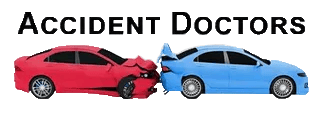Preventing Ergonomic Injuries In The Workplace: Prevention And Care
You’re typing away at work, and suddenly your wrist feels like it’s on fire.
Did you know that carpal tunnel syndrome is one of the most common workplace injuries?
This article will guide you through avoiding and caring for ergonomic injuries.
Key Takeaways
- Adjusting your desk and chair can prevent back pain. Using ergonomic furniture like adjustable desks and chairs helps you sit or stand in better positions. This keeps backaches away.
- Keyboards and mice designed for comfort reduce wrist pain. Ergonomic keyboards and mouse devices stop carpal tunnel syndrome by keeping your wrists straight instead of bent.
- Screen position matters for neck health. A monitor stand that lifts your screen to eye level stops you from bending your neck, which avoids pain.
- Training helps everyone stay safe. Teaching workers about ergonomics means they know how to avoid injuries by using equipment right and spotting risks early.
- Success stories show changes work. Businesses that switched to ergonomic setups saw fewer complaints about pains from their employees, proving small adjustments make a big difference in health and productivity.
Understanding Ergonomic Injuries

Ergonomic injuries sneak up when you least expect it—like that one quiet person at a party who suddenly tells the best story. They happen when your body gets mad at you for all the awkward ways you sit, move, or hold things at work.
Definition and Types
Ergonomic injuries, or musculoskeletal disorders (MSDs), are a big deal in the workplace. They happen when your body gets hurt from doing the same motion over and over, lifting heavy things incorrectly, or not sitting right.
Think of them as the unwanted guests at your work party! Types include carpal tunnel syndrome—where your wrist’s nerves get squeezed; tendinitis—a fancy term for inflamed tendons; and lower back pain—that achy feeling after moving boxes all day.
Common types also involve neck pain and shoulder issues, which sneak up on you while typing away at your computer or reaching too far too often. It’s like playing a game where repetitive motions and awkward postures can zap your health points if you’re not careful.
Occupational safety is all about keeping these injuries in check so that everyone stays healthy enough to enjoy their actual parties without any uninvited pains crashing them!
Common Causes in the Workplace
Jumping from what we know about ergonomic injuries, let’s talk turkey about why these pains and strains keep showing up at work. Desk jobs might seem cushy, but they’re often where trouble begins.
Picture yourself parked in front of a computer for eight hours straight. Your chair feels like it’s made of stone, and your desk? It’s either too high or too low. This is not just discomfort—it’s a one-way ticket to pain city.
An ounce of prevention is worth a pound of cure. And boy, does that hold true for avoiding ergonomic hazards at work.
Repetitive strain injuries sneak up on you like ninjas in the night—silent but deadly. Typing away without proper wrist support can spark a fiery case of carpal tunnel syndrome.
Heavy lifting isn’t just for athletes; workers hefting boxes day in and day out are signing up for lower back woes and shoulder misery without even realizing it.
The Most Common Ergonomic Injuries

Ever felt a twinge in your back after a long day at the desk? Or maybe your wrist starts to complain after hours of typing.
These are signs of ergonomic injuries—troubles that pop up when we push our bodies too hard, often without even realizing it.
From strained wrists to achy backs, these injuries sneak up on us, but they’re all too common in today’s workplaces.
Let’s dive into what these pains are telling us and how we can keep them at bay so we don’t have to visit an Urgent Care Center!
Carpal Tunnel Syndrome
Carpal Tunnel Syndrome, or CTS for short, is a sneaky visitor that makes its home in your wrists. Imagine your median nerve as a highway and the carpal tunnel as a tight tunnel it has to pass through.
Now picture traffic jams in that tunnel due to swelling, causing tingling, numbness, and even weakness in your hands. Repetitive motions from typing or manual handling jobs are usually the culprits here.
To keep this unwelcome guest at bay, consider ergonomic keyboards and special mouse devices designed to lessen the strain on your wrists.
These tools can be real game changers by giving your median nerve some much-needed breathing room.
Next up: tackling lower back pain before it starts rearranging your furniture without asking.
Lower Back Pain
Lower back pain sneaks up on you like an unexpected rain on a picnic day. It’s one of those workplace injuries that can turn from a whisper to a shout in no time.
Think about it; hours bent over your desk, ignoring the scream of your musculoskeletal system, and then bam! Your lower back decides it has had enough.
This condition is more than just an ache—it’s a loud call for help from your body.
Adjustable desks may look like simple tools but trust me, they’re game changers for keeping that pesky low back pain at bay. Imagine being able to stand up and stretch those legs without missing an email or losing focus on your work—sounds dreamy, right?
And let’s not forget about those ergonomic chairs designed to support every curve of your spine.
Pair these with some routine stretches, and you’ll be giving low back pain the slip before it even knows what hit it. Speaking of hits, let’s talk neck pain next….
Neck Pain
Cracking your neck every five minutes? That’s a sign you’re in the neck pain club, and it’s not as fun as it sounds. This type of discomfort often comes from spending too much time staring at screens or hunching over keyboards.
The bad news is that it can lead to big problems like repetitive strain injury if we keep ignoring those creaks and groans.
A stiff neck today could be a pain in the back tomorrow.
To dodge this unwelcome guest, consider tweaking your work setup. An ergonomic chair that supports your spine just right, or an adjustable desk that keeps your monitor at eye level, might seem like small changes.
But trust me, they’re game changers for keeping both your neck and shoulders happy. And don’t forget to take breaks! A little walk or some stretching every hour helps more than you think—keeping muscles loose and blood flowing beats being stuck in one spot all day long.
Tendinitis
Tendinitis jumps out as that annoying friend who shows up when you’ve been overdoing it—typing too much, playing tennis without a break, or maybe just painting the fence all weekend.
It’s your body’s way of saying, “Hey, slow down; give those tendons a rest!” Think of it like a tiny fire in your arm or leg muscles that got out of hand because you kept fueling it with repetitive motions.
I learned this the hard way after ignoring my elbow pain while chasing my dreams of becoming the next big tennis star. Spoiler alert: My elbow wasn’t on board.
The journey from ouch to okay involves giving those angry tendons some TLC with ice packs and taking breaks more often than kids trying to put off bedtime. Sometimes you might need physical therapy or special braces that look like they’re from a sci-fi movie but trust me, they help.
And here’s the kicker—making small changes in how you work can prevent this whole drama from starting again. So listen to your body and maybe swap that old desk chair for something more ergonomically friendly before your arms decide to go on strike again.
Shoulder Pain
Shoulder pain in the workplace is like that annoying friend who shows up uninvited. It’s common among people who do heavy lifting or sit for long hours with poor posture.
This kind of discomfort can sneak up on you from repetitive motion injuries or simply from sitting all day with shoulders hunched over a keyboard.
Trust me, I’ve been there – feeling as if my shoulder was plotting its escape from the rest of my body!
To tackle this unwelcome guest, we need to get cozy with ergonomic solutions like adjustable chairs and desks aimed at supporting our bodies correctly.
Picture yourself using an ergonomic mouse or sitting at a desk that’s just the right height – your shoulders will thank you! It’s not rocket science but making these small changes can keep shoulder issues at bay, so you don’t have to pause everything for surgery down the line.
And let’s face it, no one signs up for that voluntarily!
Prevention Strategies for Ergonomic Injuries

Stopping ergonomic injuries before they start is like playing detective. You’ve got to spot the clues—a wonky chair here, a high shelf there—and put things right. It’s all about making tiny changes that keep everyone from getting hurt.
Think of it as tuning up a car before it breaks down.
First off, creating a plan to make your workplace better for your body can be a game changer. This means looking around and finding things that might trip you up or make you stretch too far.
Once you know where the trouble spots are, you can fix them with better equipment or just by moving things around.
Next step: teach everyone what to look out for. Training isn’t just for new folks; even old hands need to learn new tricks sometimes. When everyone knows how their workspace should work for them, they’re less likely to end up sore or sorry.
And hey, don’t forget about gear like chairs that fit just right and keyboards that don’t make your fingers feel funny. Adding stuff.
Implementing an Ergonomic Improvement Plan

Making your workplace safer and more comfortable doesn’t have to be rocket science. It starts with an ergonomic improvement plan that’s as easy as pie.
- First, do a job hazard analysis in every department. This means looking at how work is done and finding the risky spots. Think about where the heavy lifting happens or where folks bend and twist a lot.
- Next up, get everyone on board by training managers and workers. It’s like teaching them to spot trouble before it starts — everything from a bad chair posture to how high their monitors should be.
- Setting up an ergonomics team can make a big difference. This crew keeps an eye out for problems and finds ways to fix them, making sure everyone’s input matters.
- Time to roll out the good stuff — ergonomic equipment! Adjustable desks let people stand or sit as they like, chopping away at lower back problems. An ergonomic keyboard and mouse cut down on wrist woes.
- Remember those risky spots found earlier? Tackle them head-on by redesigning workstations or changing how tasks are done, making sure workers aren’t twisting into pretzels just to get their job done.
- Here comes the real game-changer: adopting material handling gadgets that save backs and shoulders from turning into knots of pain.
- Keep track of progress by checking in on those injury rates and listening to what employees say about their workspace comfort levels.
I’ve seen first-hand how a well-thought-out plan can turn things around at my own job site — fewer complaints about achy backs and more thumbs-ups all around.
- Lastly, this isn’t a one-and-done deal; keep refining your plan based on feedback and new challenges that pop up.
With these steps, you’re not just ticking boxes for occupational safety and health; you’re building a happier, healthier place where people actually want to work.
Identifying Risk Factors

Understanding what causes ergonomic injuries at work is crucial. It’s all about spotting the bad habits and risky setups before they lead to trouble. Here’s how to do just that:
- Keep an eye out for repetitive movements. Think typing or clicking a mouse all day long. This constant repetition is a fast track to conditions like carpal tunnel syndrome.
- Watch your posture. Slumping over a desk can invite back and neck pain before you know it.
- Notice if workers are constantly reaching overhead or twisting awkwardly. These actions can strain shoulders and elbows, leading to tendinitis or worse.
- Pay attention to heavy lifting practices. Incorrect methods here can spell disaster for backs and knees, quick.
- Check if tools and equipment fit the task at hand properly. Trying to make do with something that’s not quite right can cause more harm than good.
- Be aware of long periods spent standing or sitting without a break. Movement is key to keeping musculoskeletal disorders at bay.
- Evaluate the workspace design—cramped areas force odd working positions which aren’t doing anyone any favors.
- Assess personal protective equipment (PPE) usage; neglecting this can expose workers to unnecessary risks of injury.
From my own experience, I once tweaked my setup by simply adjusting my chair height and adding a keyboard tray—astonishingly, my wrist pain eased up almost instantly! It showed me how small changes could have big impacts on health and safety in the workplace.
Training Managers and Workers

Training managers and workers is a key step in preventing workplace injuries. It’s like giving them a map to navigate through a minefield of possible ergonomic hazards.
- Kick off with an interactive workshop on the basics of ergonomics. Use examples that relate to their daily tasks, making it clear how simple changes can prevent injuries.
- Show videos or slideshows detailing stories of workplace injury and recovery. This puts a human face on the statistics, making the risks feel real.
- Provide handouts or digital resources that highlight common ergonomic pitfalls in their specific work environment. Include tips for avoiding these issues.
- Arrange hands-on sessions with ergonomic tools and equipment, such as adjustable chairs or desks, ergonomic keyboards, and mouse devices. Letting employees try out these tools helps them understand their benefits.
- Conduct regular risk assessment training to help managers identify potential hazards in the workplace design or tasks. This equips them to make timely changes before injuries occur.
- Introduce exercises and stretches specifically designed to counteract the effects of repetitive strain injury (RSI) and carpal tunnel syndrome (CTS). Encourage making these activities part of the daily routine.
- Organize team discussions where workers can share personal experiences with ergonomic challenges and solutions—fostering a culture of mutual support and problem-solving.
- Update training materials regularly to include new research findings or technologies related to occupational health, ensuring ongoing education keeps pace with innovations.
- Involve experienced workers in mentoring new hires about best practices for musculoskeletal health—passing on valuable insights gained from years on the job.
Exploring essential ergonomic equipment comes next…
Essential Ergonomic Equipment and Tools

Sitting all day? That’s a recipe for back pain. But, hey, with the right gear, you can kiss that ache goodbye! Think of your desk and chair as teammates in a game where comfort wins.
They adjust to fit you just right—no more hunching or stretching like a pretzel. And let’s not forget about the little heroes: keyboards and mice designed for human hands, not robot claws.
Your screen shouldn’t play hide and seek with your eyes. A monitor stand brings it eye-level, so no more neck craning like you’re trying to spot a shooting star. These tools are not just fancy gadgets; they’re your best buds at work—keeping those pesky pains at bay while you crush it on the job front!
Adjustable Desks and Chairs
Adjustable desks and chairs are a game changer in ergonomics, trust me. They let you change your position from sitting to standing throughout the day. This helps reduce back pain—a common workplace complaint.
Imagine bending over a desk that’s too low or stretching to reach one that’s too high. It feels like playing Twister with office furniture! That’s where adjustable desks shine. They fit you, not the other way around.
Ergonomic chairs support good posture and offer relief from musculoskeletal pain., something many of us have battled after long hours at work. I once swapped my chair for an ergonomic model, and boy, did things improve! My back thanked me, and even those nagging shoulder pains took a hike.
Plus, feeling comfortable boosted my focus – who knew?
An ergonomic chair is not just a seat; it’s your best buddy for productive days.
Ergonomic Keyboards and Mouse Devices
Ergonomic keyboards and mouse devices are game changers in the battle against work-related injuries.
They’re shaped to fit your hands just right, keeping you from twisting your wrists into awkward poses.
Using these tools can feel a bit odd at first—like dancing with new shoes—but soon enough, they become part of your daily rhythm at work. Employers are catching on, too.
More often now, they bring ergonomic equipment into the office to cut down on absenteeism caused by musculoskeletal disorders (WMSD).
So next time you’re clicking away or typing up a storm, remember that the right keyboard and mouse can keep those pesky wrist pains at bay.
Monitor Stands
So, after setting up those ergonomic keyboards and mouse devices, let’s not forget about monitor stands. These handy tools bring your screen to eye level. This simple move can keep you from bending your neck down or squinting to see the screen all day.
That’s a big win for avoiding neck pain and keeping your posture in check.
Monitor stands are like magic for your desk setup—they create space underneath for extra storage. Imagine having more room for notes or even snacks! Plus, adjusting them is a breeze which means you can share your screen with a coworker without making them do a yoga pose just to see it.
No more huddling around one tiny laptop at awkward angles.
Case Studies: Effective Ergonomic Practices

Dive into real-life stories of businesses that nailed it with ergonomic changes–you might just find the inspiration you need to make your workplace safer and more comfortable for everyone.
Success Stories from Businesses
A tech company in Silicon Valley had lots of workers complaining about wrist pain and backaches. They brought in adjustable desks and ergonomic keyboards, solving the problem almost overnight.
The staff felt better, worked harder, and took fewer breaks to stretch sore muscles. It was like hitting two birds with one stone—healthy employees and more work done!
After we changed our office layout and introduced ergonomically designed chairs, our productivity skyrocketed, shares a CEO from a startup in Austin.
Another success story comes from a graphic design firm in New York City. They faced challenges with shoulder injuries among their artists due to long hours at non-adjustable drawing tables.
By switching to standing desks that moved up or down with the push of a button, they cut down on health complaints significantly. Employees also got into fun competitions on who could stand the longest while working—a quirky but effective way to keep everyone motivated and healthy.
Lessons Learned and Best Practices
In businesses that got it right, they found putting health at the forefront wasn’t just good for workers—it was great for productivity too. They swapped traditional desks for adjustable ones and said goodbye to normal chairs, bringing in ones that actually fit the human body.
This switch not only cut down on complaints of lower back pain but also made everyone a bit more eager to get to work each day. And let’s not forget those quirky ergonomic keyboards and mouse devices—they turned out to be real wrist savers, reducing cases of carpel tunnel syndrome left and right.
But the real game-changer was training—both for managers and their teams. Knowledge is power, right? Well, these folks became superheroes of occupational health and safety.
They learned how to spot trouble before it started, like recognizing early signs of tendinopathy or making sure no one’s elbow joint was out on an awkward adventure all by itself.
Plus, they mastered the art of using monitor stands so everyone could say adios to neck pain without having to wave goodbye from a weird angle. It turns out that listening and learning from those who’ve been there done that—in this case, industrial hygienists—can flip a workplace from hazardous to healthy quicker than you can say “workers’ compensation.
Conclusion

Alright, let’s wrap this up with a bow! Keeping those muscles and joints happy at work isn’t just about comfy chairs and breaks.
It’s like cooking a great meal – you need the right ingredients: ergonomic desks, user-friendly keyboards, and screens at eye level.
Throw in some training for good posture, sprinkle regular stretches throughout the day, and voilà! You’re not only dodging injuries but also jazzing up productivity.
Remember, every little change adds up to a big difference.
So let’s keep those workplace blues and boo-boos at bay by embracing ergonomics with open arms!
FAQs
1. What’s the big deal about ergonomic injuries at work?
Think of your body like a well-oiled machine. If you keep using it the wrong way, parts start to wear out. Ergonomic injuries are sneaky; they creep up from doing the same thing over and over or sitting all wonky at your desk. Before you know it, bam! You’re dealing with something like tennis elbow or even knee osteoarthritis.
2. How do I spot these ergonomic gremlins before they get me?
Keep an eye out for warning signs your body is waving at you. Feeling a bit stiff in the wrist? Maybe your back starts singing opera by lunchtime? These could be early cries for help from conditions like de Quervain’s tenosynovitis or other musculoskeletal disorders.
3. Can’t I just tough it out if my arm feels funny?
Playing the hero might work in movies, but when it comes to things like tendinosis or cumulative trauma disorders, ignoring them is like trying to put out a fire with gasoline. The trick is catching these symptoms early on – think of symptomatic as your body’s way of saying, “Hey buddy, let’s talk.”
4. So what’s this hierarchy of controls I’ve heard whispers about?
Imagine a superhero team where each member has their own special power to fight ergonomic villains. At the top, we’ve got elimination (basically not doing the stuff that hurts us), and then substitution (finding less painful ways to do our tasks). We also have engineering controls that change how we interact with our workspaces and administrative controls that adjust how long and how often we do certain tasks.
5. And if I end up feeling sore anyway?
First off, don’t panic! There are folks trained in industrial hygiene and public health who can swoop in with health hazard evaluations faster than you can say “workers’ compensation.” They’ll check out your workspace and show you moves to soothe those achy muscles or nerves gone wild from too much vibration.
Remember: It’s better to play safe now than sorry later – because nobody wants their hands feeling like they’ve been through a hand-arm blender marathon.

